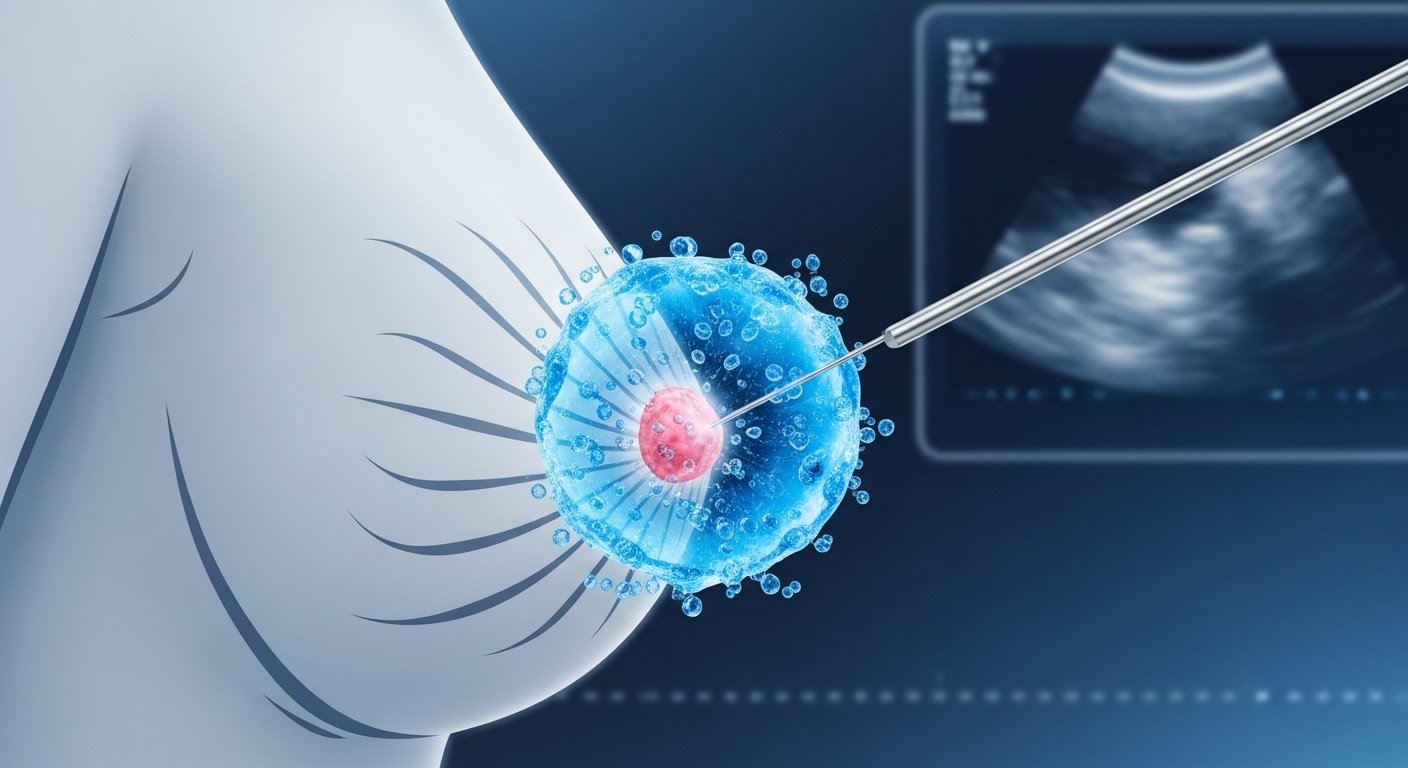Cryoablation: Non-Surgical Freezing Method for Breast Cancer

Breast cancer remains one of the most frequently diagnosed cancers worldwide, making ongoing research into less invasive and more effective treatment options vitally important. While traditional surgery has long been the primary method for removing malignant tumors, a groundbreaking non-surgical technique—known as **Cryoablation** or the ‘freezing method’—is emerging as a powerful and hopeful alternative for specific patient groups.
This innovative procedure, which involves destroying tumor cells by freezing them to extremely low temperatures, is changing the treatment landscape. Experts are now confirming its potential to offer patients a chance for **breast cancer treatment** without a large surgical incision, stitches, or an overnight hospital stay. This detailed guide explores how Cryoablation works, its significant advantages, and the specific patient criteria that make it a viable, life-changing option.
Understanding Cryoablation: The Science of Freezing Cancer
**Cryoablation** is a minimally invasive procedure that uses extreme cold to destroy cancerous tissue. It is a targeted, localized therapy that harnesses the damaging effects of deep freezing on malignant cells, offering a precision approach to tumor removal without traditional cutting.
The Procedure: How the Tumor is Frozen
The entire process is quick, generally well-tolerated, and is performed under image guidance (typically ultrasound) to ensure accuracy:
- Local Anesthesia: The patient is given local anesthesia to numb the targeted area of the breast. General anesthesia is not required, significantly reducing patient risk and recovery time.
- Probe Insertion: Guided by real-time imaging, a thin, needle-like metal probe is inserted directly into the core of the breast tumor.
- Freezing Cycle: Highly specialized gas, such as liquid nitrogen or argon gas, is circulated through the tip of the probe. This rapidly drops the temperature in the surrounding tissue to levels as low as $-100$ degrees Celsius.
- Ice Ball Formation: The extreme cold kills the tumor cells by forming an ‘ice ball’ around the probe tip. This process destroys the cell membranes and internal structures of the cancer cells.
- Immune Response: The destroyed tumor tissue remains in the breast initially but is then recognized by the body’s immune system, which gradually works to break down and absorb the dead tissue over time.
Key Advantages of the Non-Surgical Approach
For patients who meet the specific eligibility criteria, the **cryoablation** method offers several distinct advantages over conventional surgery:
1. Minimally Invasive & Rapid Recovery
- No Major Incision: Unlike a lumpectomy, Cryoablation requires only a small skin puncture to insert the probe, resulting in minimal scarring or disfigurement.
- Same-Day Discharge: Because the procedure is performed under local anesthesia and involves no large wound or stitches, patients can typically return home within a few hours, dramatically speeding up recovery.
2. Improved Cosmetic Outcomes
As the frozen, dead tumor tissue is naturally absorbed by the body, the procedure provides superior cosmetic results compared to excision surgery, where a substantial piece of tissue is physically removed. This minimal impact on the breast shape and appearance is a significant psychological and aesthetic benefit for many women.
3. Pain and Comfort
The freezing action itself acts as a local anesthetic, significantly reducing pain during and immediately after the procedure. This contributes to the comfort level and rapid return to normal activities.
Patient Selection: Is Cryoablation Right For You?
It is critical to understand that **Cryoablation** is not a universal replacement for surgery and is primarily used in specific, carefully selected cases. Treatment decisions are always made by a multidisciplinary council involving surgical oncologists, radiologists, and pathologists.
The most suitable candidates generally fall into these categories:
- Small Tumors: The procedure is most effective for small, well-defined tumors, often $<1.5$ cm in diameter.
- Early-Stage Cancer: It is typically reserved for early-stage or low-risk malignancies.
- High-Risk Surgical Patients: Patients who have other underlying health conditions, are elderly, or are otherwise deemed poor candidates for general anesthesia or traditional surgery.
- Benign Lesions: It is also commonly and successfully used for benign breast tumors (like fibroadenomas) that require removal.
For larger or more complex tumors, or those that have spread to lymph nodes, traditional surgery, chemotherapy, and radiation remain the standard of care.
The Future of Breast Cancer Treatment
As experts highlight, the future of oncology is moving toward non-surgical, targeted solutions. Techniques like **Cryoablation** offer patients a powerful combination of effective tumor destruction with preservation of healthy tissue, a key step forward in modern cancer care. While it is still being integrated into widespread practice, the freezing method is undoubtedly an exciting and hopeful development in the fight against breast cancer.
Conclusion: A Breakthrough for Select Patients
The introduction of **Cryoablation** provides a crucial, less daunting option in the complex world of breast cancer management. This cutting-edge ‘freezing method’ offers the possibility of destroying malignant tumors with minimal invasiveness, a quick recovery, and excellent cosmetic results for carefully selected patients. If you or a loved one is facing a breast cancer diagnosis, always discuss all possible options, including this innovative non-surgical technique, with your dedicated oncology team.
FAQ
Is Cryoablation suitable for all types and stages of breast cancer?
No, Cryoablation is not suitable for all cases. It is generally reserved for small, early-stage, and well-defined tumors, often less than 1.5 cm in size. Larger tumors, or cancer that has spread to the lymph nodes, typically still require conventional surgery and systemic treatments.
What happens to the frozen tumor tissue after the Cryoablation procedure?
The frozen tumor tissue is killed during the procedure, leaving a small lesion in the breast. The body’s natural defense and immune system mechanisms gradually break down and absorb this dead tissue over the following weeks and months, meaning there is no need for surgical removal.
Is the Cryoablation procedure painful for the patient?
The procedure is performed using local anesthesia, which ensures the patient feels minimal to no pain during the process. Furthermore, the extreme cold itself acts as a natural anesthetic, contributing to patient comfort and a rapid return to daily activities shortly after the procedure.
